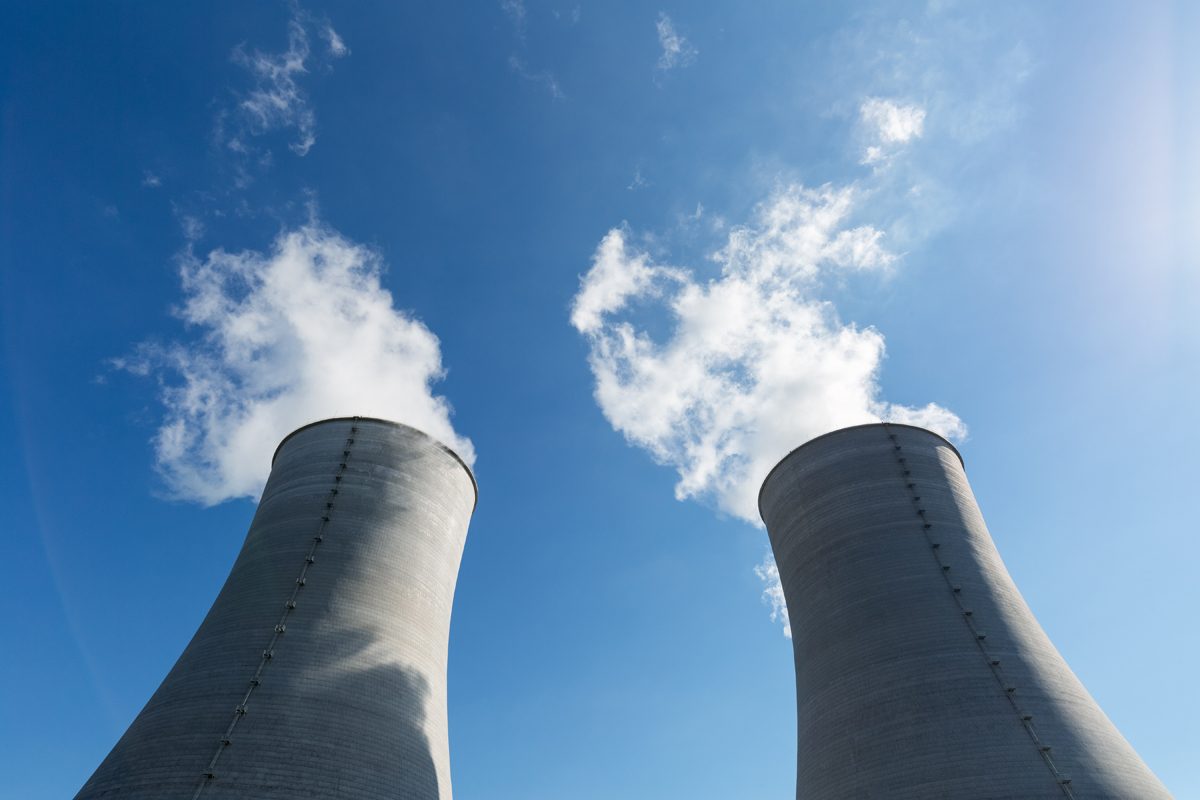Traditional cooling towers, primarily used in power plants and large industrial facilities, don’t directly use solar technology for their core operation. They typically rely on electricity powered by conventional sources like fossil fuels to operate fans and pumps.
However, there’s a growing trend of integrating solar technology with cooling towers to improve their energy efficiency and sustainability. Here are two ways this is being done:
1. Solar-powered Cooling Towers:
- These specially designed towers have photovoltaic (PV) panels mounted on them to generate electricity that powers the fans and pumps.
- This can significantly reduce the tower’s reliance on grid electricity, leading to cost savings and lower carbon emissions.
- Examples include EVAPCO’s SUN cooling tower, which can achieve net-zero operation under certain conditions.
2. Integrating Solar with Water Chillers:
- This approach pairs conventional cooling towers with solar-powered water chillers.
- The chillers use solar energy to cool the water circulated through the cooling tower, reducing the overall energy consumption of the system.
- This method offers greater flexibility as existing cooling towers can be adapted without major modifications.
Overall, while traditional cooling towers don’t inherently use solar technology, there’s increasing development and adoption of solar-powered solutions to make them more sustainable and energy-efficient.
What Are Photovolatic (PV) Panels?
Photovoltaic (PV) panels, also commonly known as solar panels, are the key components that capture sunlight and convert it into electricity. They are made up of numerous smaller units called solar cells, which are the workhorses of the process. Here’s a breakdown of how they work:
Components and Working:
- Solar cells: These are typically made from semiconductor materials, most commonly silicon, but newer technologies are exploring other options as well. When sunlight hits these cells, it knocks electrons loose, creating an electric current.
- Panel construction: Multiple solar cells are connected electrically and encased within a protective housing, forming a single PV panel. This housing typically includes glass for protection, a frame for mounting, and encapsulating materials to protect the cells from the environment.
- Direct current (DC) to alternating current (AC) conversion: The electricity generated by the panels is in the form of direct current (DC). For most applications, however, we need alternating current (AC). This conversion is done by an inverter, which is a separate component in most home and small commercial systems.
Types and Applications:
- There are various types of PV panels available, differing in materials, efficiency, and cost. The most common are crystalline silicon panels, but thin-film and other emerging technologies offer different advantages depending on the application.
- PV panels are used in a wide range of applications, including:
- Generating electricity for homes and businesses: This is the most popular application, with rooftop solar systems becoming increasingly common.
- Large-scale solar power plants: These generate electricity for entire communities or even feed into the power grid.
- Portable and off-grid applications: Solar panels can power anything from small electronics to entire cabins or RVs, making them valuable for remote locations or backup power.
Benefits of PV Panels:
- Renewable energy: Solar energy is a clean and sustainable source of electricity, helping to reduce reliance on fossil fuels and combat climate change.
- Reduced energy costs: Over time, generating your own electricity with solar panels can significantly reduce your energy bills.
- Increased property value: Homes with solar panels often have higher property values.
- Reliable and low maintenance: Once installed, PV panels require minimal maintenance and have a lifespan of 25 years or more.
What is EVAPO’s SUN Cooling Tower?
EVAPCO’s SUN cooling tower is a unique cooling tower model that integrates photovoltaic (PV) panels directly into its design, making it a net-zero energy cooling solution under specific conditions. Here’s a breakdown of its key features:
Core functionality:
- It operates similarly to traditional induced-draft, counterflow cooling towers using water evaporation to cool down water from heat sources like buildings or industrial processes.
- It comes in factory-assembled and field-assembled options, catering to different project requirements.
Solar integration:
- The key differentiator is the strategically placed array of PV panels on the tower’s structure.
- These panels generate electricity that powers the fans and pumps of the cooling tower, significantly reducing its reliance on grid electricity.
- Under typical North American solar exposure and commercial HVAC loading conditions, EVAPCO claims the SUN tower can offset 100% of its annual fan energy consumption through solar power.
Additional benefits:
- Reduced operating costs: By minimizing grid electricity use, the SUN tower can lead to significant cost savings over its lifespan.
- Lower carbon footprint: Its reliance on renewable solar energy reduces greenhouse gas emissions compared to traditional towers.
- Easy installation and maintenance: The field-assembled option enables easier installation, and the design incorporates features for simplified maintenance.
Key considerations:
- The tower’s energy offset potential depends on various factors like location, solar irradiation levels, and cooling tower loads.
- While achieving complete net-zero operation may not be possible in all scenarios, the SUN tower still offers substantial energy savings and sustainability benefits.
- The initial cost of the tower might be higher due to the integrated solar panels, but the long-term cost savings can outweigh the initial investment.
Overall, EVAPCO’s SUN cooling tower represents a significant advancement in sustainable cooling technology, offering an appealing solution for businesses and organizations seeking to reduce their environmental impact and energy costs.
We offer replacement cooling tower parts for Marley, BAC, Evapco, Tower Tech, Recold, Imeco, Vilter and Frigid Coil cooling towers. We manufacture parts for all makes and models of cooling towers.
- Replacement Heavy Duty Eliminators
- Replacement Drift Eliminators
- Replacement Counterflow Fill Media
- Replacement Cross Flow Fill Media
- Replacement Air Intake Louvers
- Replacement Cooling Tower Sealant
- Replacement Float Valves
- Replacement Cooling Tower Nozzles
- Replacement Evaporative Cooling Media
- Replacement Cooling Towers





